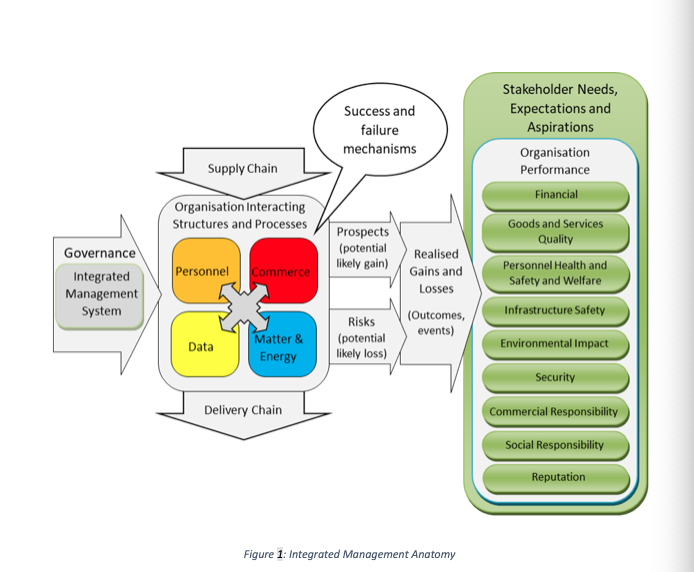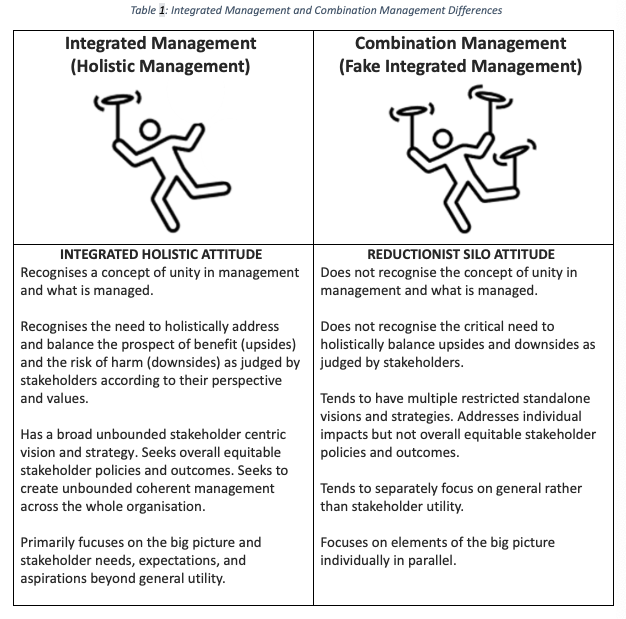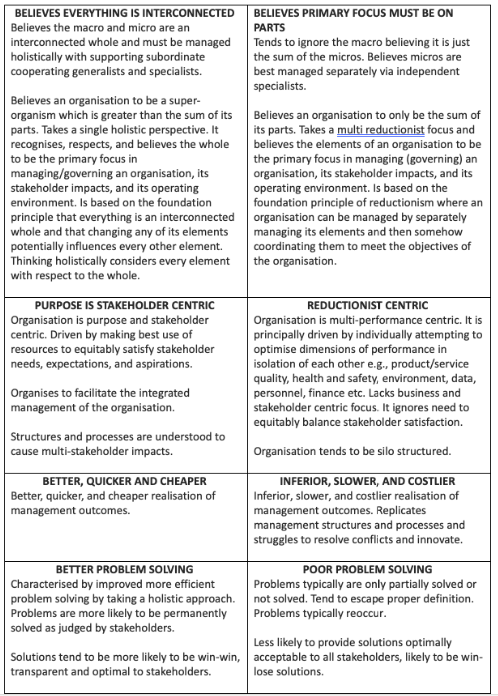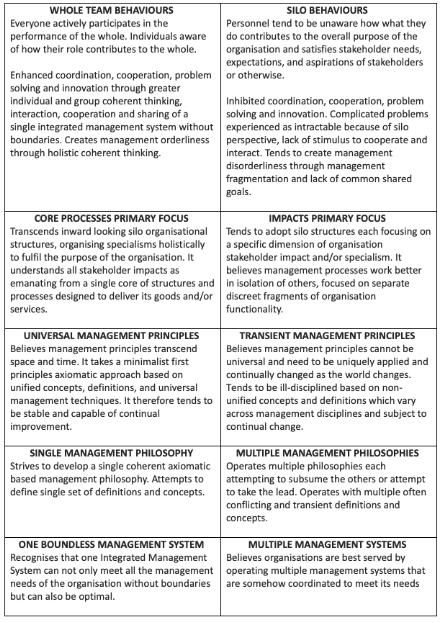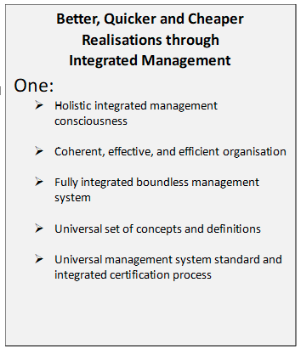 Two tails of management are in common circulation, one Integrated Management and the other is Combination Management, although the latter is commonly pedalled as integrated. This presents a problem when seeking to improve management processes and organisational performance.
Two tails of management are in common circulation, one Integrated Management and the other is Combination Management, although the latter is commonly pedalled as integrated. This presents a problem when seeking to improve management processes and organisational performance.
So how do you distinguish what is true and what is false? Is a mistaken comprehension of Integrated Management disrupting the optimising of your strategy and impeding progress? How would you know if your strategy is based on true or false foundations? A poll of beliefs in the world being flat in the Middle Ages would have provided false confidence and anyone challenging it would doubtless have been ridiculed or cancelled.
 Today, true theory and practice of Integrated Management is freely accessible to all organisations and comes with proven benefits, but flat earth management thinking is still the norm amongst many. There are many management professionals and bodies who will falsely seek to convince you that their non-holistic fragmented approaches are genuine Integrated Management. If humankind is to reap the considerable benefits of Integrated Management, there is an urgent need for top management to fully understand its nature, its benefits and to be able to distinguish between what is true and what is false.
Today, true theory and practice of Integrated Management is freely accessible to all organisations and comes with proven benefits, but flat earth management thinking is still the norm amongst many. There are many management professionals and bodies who will falsely seek to convince you that their non-holistic fragmented approaches are genuine Integrated Management. If humankind is to reap the considerable benefits of Integrated Management, there is an urgent need for top management to fully understand its nature, its benefits and to be able to distinguish between what is true and what is false.
What is often presented as Integrated Management is just a contrived management combination process which is the complete opposite. Integrated Management is commonly misunderstood because the term is abused by vested interests endeavouring to perpetuate the conduct of fragmented management for self-serving commercial reasons or through ignorance. The adoption of an integrated or holistic approach to management is a key strategic decision and the goal of this article is to empower organisations to achieve more with less through a deeper understanding of what Integrated Management is and what it is not.
Basically, Integrated Management starts with the whole while Combination Management starts with separate management elements and attempts to stitch them together into a viable whole. The latter approach to management is typically characterised by being non-holistic, fragmented, silo structured and incoherent. An example of this is the International Standards Organisation (ISO) fragmented multiple management system standards. This is despite a single universal management system standard such as MSS 1000, first published in 2014 by the Integrated Management Community, being simpler, more effective, and more efficient permitting products and services to be created better, more quickly and more cheaply. Integrated Management is simply a joined-up thinking holistic attitude to management recognising no boundaries in contrast to ‘Combination Management’ which starts by deliberately defining boundaries. Integrated Management starts with the whole while Combination Management attempts to create a management whole from management fragments. This fractured view of management runs counter to the modern physics world view which has endured for over a century that manifest creation is totally interconnected which. Nothing exists in isolation, and this is also true for management dynamics, what is managed and stakeholder satisfaction.
Management is all around
Management is the process of dealing with or controlling things or people to meet objectives and is conducted in every nook and cranny of the world where there is any type of human endeavour. This may be large or small, simple, or complicated, enacted by an individual or an organisation or government. What is remarkable is that despite the astonishing diversity of what is being managed, the principles of good management transcend space and time just like the general laws of nature have done since ‘The Big Bang’. If management is conducted anywhere else in our vast universe by humans or any other life-form, exactly the same management principles apply in achieving optimal success. If this is true, those who are continually reinventing the basic principles of management and charging for the latest version must only have a shallow understanding of management theory and practice. They lack the motivation to reveal these universal management principles for the greater good.
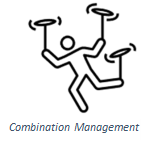
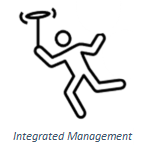 Our libraries are full of management books lacking axiomatic foundations, universality of application and a disciplined structured approach which we naturally expect of other disciplines such as mathematics and science. Many resist management becoming a science because they do not believe it is possible or perceive it as a threat. Management is all too often faddish and laced with snake oil.
Our libraries are full of management books lacking axiomatic foundations, universality of application and a disciplined structured approach which we naturally expect of other disciplines such as mathematics and science. Many resist management becoming a science because they do not believe it is possible or perceive it as a threat. Management is all too often faddish and laced with snake oil.
The antidote to this chaos is structured joined up holistic management theory and practice. Integrated Management can actually be practiced by anyone whatever their role or perspective. We don’t need to abandon the nuggets of wisdom discovered via the fragmented management approaches, but they need to be subsumed into the coherent rational structure of Integrated Management. An organisation is after all a superorganism with similar characteristics to an individual such as having consciousness, values, competence, ability to make rational decisions, make relationships, communicate, and take actions etc. However, the larger or more complex the organisation the more its behaviour needs to be orchestrated by leadership, a management system and competence. However large or complicated the enterprise it will thrive on a single joined-up coherent simple approach that empowers everyone to cooperate harmoniously endeavouring to equitably satisfy the needs, expectations, and aspirations of stakeholders.
Muddied management waters
The Integrated Management Community (IMC) was founded in 1996 to promote the theory and practice of Integrated Management. This was the year that ISO started fragmenting its management system standards by publishing ISO 9001 and ISO14001 in parallel separately covering product/service quality management systems and the environmental management systems respectively. It was the time when the difference between joined-up thinking and reductionist fragmented thinking management theory and practice started to become increasingly pronounced through the attitude to management systems and standards in particular. The fragmented thinking approach spawned an ongoing proliferating publication of continually changing silo focused management systems standards within the International Standards Organisation (ISO) and certification bodies, rather than a single universal management system standard such as MSS 1000. Together with multiple certifications ISO has grown and perpetuated an industry which is not fit for purpose placing a burden rather than a solution on global organisations.
ISO is arguably one of the biggest purveyors of anti-integrated management thinking on the planet. It impedes the application of joined-up thinking through its fragmented management rational and standards. It is aware that it fails to satisfy organisation’s needs, but it struggles to improve and actually makes things worse through ongoing fragmenting of management theory and its application via standards.
Following criticism of lack of standardisation of its management system standards structure, it attempted to implement a common framework for structuring its standards based on an ill-conceived taxonomy. It’s called ISO Annex SL and is demonstrably not fit for purpose because each management system standard still needs an annex for leftovers. Contrast this with the Universal Management System Standard MSS 1000 employing a complete hierarchical taxonomy where there is a logical place for everything and does not need annexes for leftovers. ISO is aware that Annex SL is not fit for purpose but through implementing it in all its current publications it has created a monumental problem in attempting to improve it.
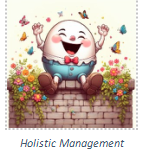 As well as creating multiple ill-structured fragmented management system standards, ISO published a handbook titled: ‘ISO – The Integrated Use of Management System Standards (IUMSS)’. Now in its second edition, it is intended to assist organisations to create Humpty Dumpty from multiple fragments rather than just adopting a whole integrated coherent Humpty Dumpty in the first place. This handbook is the proof that ISO is aware that its standards are not fit for purpose and that it is clueless about Integrated Management or just doesn’t want to acknowledge it exists. The handbook should really have been titled ‘ISO – Making Combined Use of Partial Management System Standards’, or alternatively ‘Making the Best of the ISO Mess’.
As well as creating multiple ill-structured fragmented management system standards, ISO published a handbook titled: ‘ISO – The Integrated Use of Management System Standards (IUMSS)’. Now in its second edition, it is intended to assist organisations to create Humpty Dumpty from multiple fragments rather than just adopting a whole integrated coherent Humpty Dumpty in the first place. This handbook is the proof that ISO is aware that its standards are not fit for purpose and that it is clueless about Integrated Management or just doesn’t want to acknowledge it exists. The handbook should really have been titled ‘ISO – Making Combined Use of Partial Management System Standards’, or alternatively ‘Making the Best of the ISO Mess’.
 For a couple of decades at least, keynote management speakers have been extoling the need for joined up thinking to address the challenges of our time and manage modern business, but generally doesn’t get into the all-important detail. What one person claims to be joined-up thinking may not necessarily be another’s or even joined-up at all. How can we recognise the genuine article from the counterfeit or false.
For a couple of decades at least, keynote management speakers have been extoling the need for joined up thinking to address the challenges of our time and manage modern business, but generally doesn’t get into the all-important detail. What one person claims to be joined-up thinking may not necessarily be another’s or even joined-up at all. How can we recognise the genuine article from the counterfeit or false.
Although we can outwardly observe management behaviour through its communications and actions, management is conducted via thinking processes on the level of the conscious mind of one or more people. It is actioned through people to direct and guide the organisation in delivering its purpose which is supplying specific goods and/or services. However, these management processes critically depend on our fundamental attitude to management and whether our thinking is holistic, unbounded, and fully coherent, or in contrast is fragmented and reductionist. The former starts with a big picture holistic perspective while the latter starts with creating discreet elements followed by processes attempting to create a whole. Integrated Management simply creates a whole by not fragmenting it in the first place, while Combination Management believes wholes can only occur following combination processes.
You tend not to hear the term Combination Management Practitioners because they falsely mask as Integrated Management Practitioners under the people’s misconception of what Integrated Management truly is. People do not suspect that it is counterfeit Integrated Management or appreciate the downsides of its adoption and application. We thus live in a world where much of management is unnecessarily fragmented, duplicated, and incoherent leading to ineffectiveness, inefficiency, poor problem solving, incompetence, inability to innovate, poor competitiveness, and every other measure of organisational ill-health.
The attitude of all leaders, managers, and personnel needs nurturing towards integrated holistic thinking without boundaries at all levels of global and national governance and management. Integrated Management empowers everyone just as marching in step creates greater forces on a bridge when soldiers march in step. People tend to be inherently holistic or reductionist thinkers, but education and experience can nurture a bias towards integrated or reductionist modes of thinking. These two modes of thinking are abstract, but they give rise to different reality outcomes, differing potential for value creation and value retention, and the positive and negative stakeholder impacts.
There is a world of difference between Integrated Management and Combination Management and is at the heart of much misunderstanding and ignorance of joined-up management thinking and application. This inhibits its adoption, prevents the realisation of its many advantages, and stops it addressing the big issues of our time. What many are claiming to be Integrated Management, including major bodies like the International Standards Organisation (ISO), and many professional bodies, is not Integrated Management and creates confusion, perpetuating ignorance and preventing much needed economic, social, and environmental progress.
Coherent management thinking and action
As mentioned earlier, management behaviour or dynamics is the process of dealing with or controlling things or people to meet objectives and is conducted everywhere by human and higher animals on the level of consciousness. The behaviour can be individual or collective and involves thinking and action. However, the power, effectiveness and efficiency of this management behaviour depends on the degree it is boundless, integrated, and coherent.
Boundless, integrated coherent management thinking leads to action that is:
- Performed using the least amount of energy,
- Performed in the shortest time,
- Promoting effective, efficient, and optimal organisation administration and dynamics,
- Favours most effective and desirable customer and other stakeholder outcomes,
- Aligned with the purpose of the organisation or project,
- Not harming or causing intolerable impacts to any stakeholder,
- Not inequitably impacting stakeholders needs, expectations or aspirations,
- Holistically and systematically promoting continual learning and improvement via integrated nested plan-do-check-act cycles.
Benefits will be realised even if an organisation only has patches of this integrated management behaviour, e.g., in some of its projects. However, the wider this prevalence of this behaviour the more the benefits will synergistically accrue. Ideally it should be homogeneous across the whole organisation embracing integrated strategic, tactical, and operational management behaviour without boundaries.
Coherent management thinking critically depends on the state of mind of the actor. More coherent and effective thinking can be cultured through techniques such as Transcendental Meditation which has been scientifically validated. Consciousness will also be nurtured through harmonious work environments, well-designed integrated management systems, avoidance of fatigue and stressors, and the support of line managers and work colleagues.
IM theory and application
Many think of Integrated Management as just pertaining to Integrated Management Systems which define rules directing and guiding an organisation’s structures and processes. However, Integrated Management Systems are just a subset of Integrated Management which applies to the total management and governance of the organisation and not just its management system(s). The Integrated Management Community (IMC) defined the following principal definitions relating to Integrated management:
“Integrated Management is the understanding and effective direction of every aspect of an organisation so that the needs and expectations of all stakeholders are equitably satisfied by the best use of all resources.”
This definition is contained and elaborated in the paper: ‘Integrated Management and Principles’. It should be noted that the concept of sustainability naturally emerges from the IMC definition of Integrated Management because stakeholders can be global and those as yet unborn.
Taking an Integrated Management approach, an Integrated Management System can be designed to orchestrate the total behaviour of the organisation so that every element ideally supports its overall purpose and objective.
“An Integrated Management System is a single integrated system used by an organisation to manage the totality of its processes, in order to meet the organisation’s objectives and equitably satisfy the stakeholders.”
This definition is contained and elaborated in the IMC paper: Integrated Management System Definition and Structuring.
However, in more recent times integrated management systems have been classified as either fully or partially integrated. The Universal Management System Standard MSS 1000 therefore introduced the following definitions:
“An Integrated Management System is a management system that has a scope that includes two or more aspects of an organisation’s performance that is capable of being managed by separate distinct management systems.”
“A fully integrated management system is a management system that addresses the totality of the organization’s structures and processes with the exception of arrangements that need to be covert.”
It should be noted that a full or partial Integrated Management System relates only to how the organisation designs it and has nothing to do with compliance with multiple standards, regulations, or any other stakeholder requirements. Compliance with all these external requirements can be managed by the Integrated Management System which is organisation and not standards centric. How the organisation designs its Integrated Management System is its choice to meets its needs. A good IMS is like building architecture, it needs to be both functional and elegant. The following paper will help organisations intending to implement an IMS or improve or extend an existing IMS:
Research has shown that Integrated Management Systems are mainstream thinking in the UK and their scope is likely to become unbounded in the future through competitive necessity and the need to effectively address global problems. Anyone doubting the benefits of Integrated Management and Integrated Management Systems should read the Benefits of Integrated Management.
Additional resources and help are available via the Integrated Management Community website and everyone is warmly invited to join its LinkedIn Group: https://www.linkedin.com/groups/12133706/. The IMC Hub is its steering committee focuses on the development and application of Integrated Management theory and practice and welcomes those who may be interested in serving on its committee.
Differences between true and false Integrated Management
The principal difference between true and false Integrated management is the way management thinking is conducted on the level of the conscious mind. It is revealed by the speech and behaviour of the manager(s) and it manifests in ways and actions that can be readily observed in deeds, structures, and processes. The competence to think in an integrated coherent way can be observed through interview, examination, psychological testing, and direct measurement of the coherence of brainwaves.
Integrated Management (Holistic Management), in essence, is an attitude to management conducted within the conscious mind of managers acting individually or collectively with others. It takes a boundless holistic approach where every component of an organisation is understood with respect to the whole and its impacts on stakeholders. The principle is often referred to in health care where ailments are considered non-holistically by focusing attention very narrowly rather than within the whole functioning and well-being of the person. Integrated Management does not preclude reductionist analysis but only when associated with synthesis, so that component elements are understood, directed, and controlled with respect to the management big picture and its objectives. Conducted together, reductionism takes us from the whole to the element(s) and synthesis takes the element(s) back to the whole.
Conversely, Combination Management is silo thinking and is diametrically opposite to true Integrated Management. This causes confusion for those attempting to reap the considerable benefits of Integrated Management. Combination Management attempts to stitch together separate elements of management into a whole. This approach is in essence fragmented, reductionist, non-integrated and outmoded thinking resulting in suboptimal management behaviour and outcomes.
Combination Management perceives the world as essentially disconnected elements that need combining to form an interacting whole. It starts with fragmented management and organisational elements in contrast to Integrated Management which starts with a boundless whole. Combination Management is consequently suboptimal because multi-focused management of the parts produces outcomes with potential conflicts, lacking coherence and harmony in equitably satisfying stakeholders needs, expectations and aspirations.
Figure 1 below shows the general anatomy of the Integrated Management of any organisation. It comprises of interacting personnel, commerce, data, matter, and energy in various amounts depending on the organisation, orchestrated by a single integrated management system. The management system is designed to fulfil the organisation’s purpose which is the delivery of specific goods and/or services. The resulting behaviour of the organisation forms multiple types of organisation performance comprising potential likely gains and likely losses as judged by the organisation’s stakeholders. Each stakeholder impact varies according to the specific needs, expectations and aspirations of each specific stakeholder and may be positive or negative i.e., perceived as a gain or loss respectively. Integrated Management attempts to make the best use of resources to equitably satisfy the stakeholders.
In contrast to Integrated Management, Combination Management attempts to separately manage two or more of the typical nine dimensions of performance listed on the right-hand side of Figure 1. It attempts to achieve this via multiple discreet management systems each under the control of a semi-autonomous silo. This is unlike the single integrated management shared by the whole organisation in Integrated Management Anatomy shown in Figure 1.
The following table highlights the principal differences that are commonly observed between Integrated Management and Combination Management. It may aid organisations in assessing the maturity of their management thinking and processes.
Integrated Management is a simple least action and minimalist approach to management as opposed to Combination Management which is exhausting and wasteful. Integrated Management achieves more with less management resource – it is simpler, more effective, quicker, and cheaper. It can be applied to all aspects of management including strategy, tactics, and operations in any type of endeavour including projects and problem solving. It empowers organisations to be more creative and innovative making them more competitive and profitable. It empowers organisations to make the best use of resources while equitably satisfying stakeholder needs, expectations, and aspirations. Employees experience greater fulfilment and less stress improving productivity and creativity.
Such an approach makes use of subordinate specialist disciplines and competences as required by organisations to deliver their purpose but are required to participate in integrated management structures and processes which they are required to share and respect.
The COVID pandemic crisis and other global threats has surely taught us that Integrated Management is critical if we are to overcome and manage our current problems and new technology challenges such as AI. A holistic approach is essential that equitably satisfies all stakeholders including those as yet unborn.
In life there are natural holistic thinkers and reductionist thinkers. The latter can be educated and trained to exploit their talents within a holistic framework, and the former can help coordinate and educate the latter. Sadly, our educational and training bodies are mostly silo structured and reductionist. This contributes to many of today’s big problems and retards development of solutions because of reduced problem-solving competence.
Integrated Management is primarily an attitude to management where every element is viewed and managed with respect to the whole organisation. With a true understanding of Integrated Management why would anyone choose to harm their organisation’s potential by degrading and fragmenting their management arrangements?
Bio Ian Dalling
Ian Dalling is the Director of ‘Unified Management Solutions’, that specialises in integrated approaches to quality and risk management. He is a Chartered Mechanical and Electrical Engineer, a fellow of the Chartered Quality Institute, a fellow of the International Institute of Safety and Risk Management and holds degrees in engineering and physics. He is a retired management consultant and chair of the Integrated Management Community.
Ian’s career commenced in 1962 working for the Central_Electricity_Generating_Board in various posts within nuclear power plants embracing operations, planning, management services, quality management. In 1989 he moved to the United_Kingdom_Atomic_Energy_Authority Safety and Reliability Directorate (SRD) as a risk management analyst and consultant.
His career has spanned the design, construction, commissioning, operation, and decommissioning of conventional and nuclear power plants, as well as providing a wide range of quality/risk management consultancy in other major hazard industries including oil and gas, electrical power distribution, rail, construction and medical devices. He started his own management consultancy in 1999 delivering services for clients in the UK and internationally in Eastern Europe, India, and China for national and international clients. He chaired the Chartered Quality Institute Integrated Management Special Interest Group from 2007 until 2020 when it was morphed into the Integrated Management Community. Ian led the international team that created the world’s first universal management system standard without boundaries (MSS1000). He has published many integrated management papers and articles.
His roles have included:
- Leading operational planning team during the construction and commissioning of the Dungeness B Advanced Gas Cooled Reactor nuclear power plant.
- European Notified Body Quality Manager certifying machinery and medical devices under European Product Directives.
- Serving on the European Process Safety Centre Committee, and the British Standards steering committee for BS 8800:1996, a guide on the management of occupational health and safety. BS8800 informed OHSAS18001 which informed ISO45001.
- Leading a team assessing the 120-year decommissioning programme for the Winfrith Steam Generating Heavy Water Reactor in the UK.
- Assessing UK nuclear weapons assembly and maintenance safety culture.
- Developing crisis and emergency plans for a regional electricity company.
- Member of international team that assessed the safety of the Lithuanian Ignalina RBMK nuclear power plant following the Chernobyl_disaster.
- Providing systems analyst support during the development of safety critical software.
Publications
Ian Dalling has published many articles on integrated management and the universal management system standard MSS1000 in a range of publications including CERM Risk Insights, the International Institute of Risk Management (IIRSM), the Chartered Quality Institute (CQI), and the International Register of Certified Auditors (IRCA) Journals.
Publishing a book on integrated management is still on Ian ‘s to-do list. The closest to fulfilling this aspiration has been the drafting of the 300 page universal management system standard MSS1000 which he intensely focused on between 2011 and 2014. It was based on a set of mutually consistent unified management principles, concepts and definitions. MSS1000 had been demonstrated to be possible in his article ‘Order from Chaos’ published in the April 2011 edition of Quality World which explained a full scope boundless hierarchical management topic taxonomy. In essence, the taxonomy defined a logical place for everything that can potentially be needed in a management system, standard, regulation, license etc. and was informed by his quality and risk management consultancy experience and the creation of proven full scope boundless integrated management systems created with his clients.
Ian has published the following notable papers on various aspects of integrated management:
- Research into relationships and correlations between plant safety performance and occupational safety performance for British_Energy and BNFL Magnox in conjunction with DNV, 2000.
- Understanding and assessing safety culture, Society for Radiological Protection meeting, Saint Catherine’s College Oxford, 9 April 1997, published in the December 1997 Journal of Radiological Protection. Includes the ‘Dalling Model’ of organisational performance.
- The Future is Unified – a Model for Integrated Management, Quality World, April 2000.
- Integrated Management Definition, CQI Integrated Management SIG, 2002, reissued 2007.
- Eyes and Ears (integrated monitoring), Quality World, April 2004 – subsequently translated and published into Chinese and Japanese in the ‘Global Sources’ journal.
- Integrated Management System Definition and Structuring Guidance, CQI Integrated Management SIG, 2007.
- Order from Chaos (management topic taxonomy), Quality World, April 2011.
- Drafting of Universal Management System Standard MSS1000. 2011-2014.
- Management Integration: Benefits, Challenges and Solutions, International Institute of Risk and Safety Management (IIRSM) Technical Paper, March 2012.
- Managing Data in an Evolving World – A guide for good data governance, International Institute of Risk and Safety Management (IIRSM) Technical Paper, August 2016.
- Using MSS 1000 to Boost Performance, CQI Integrated Management, October 2016.
